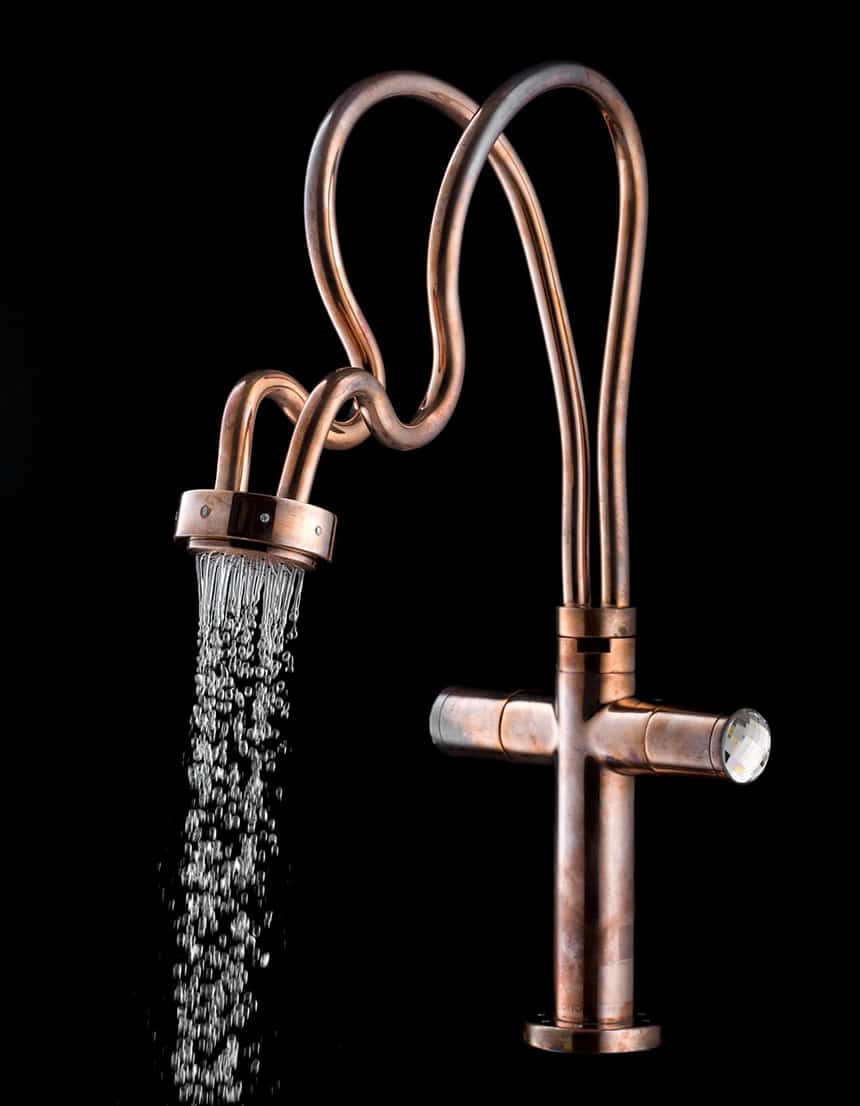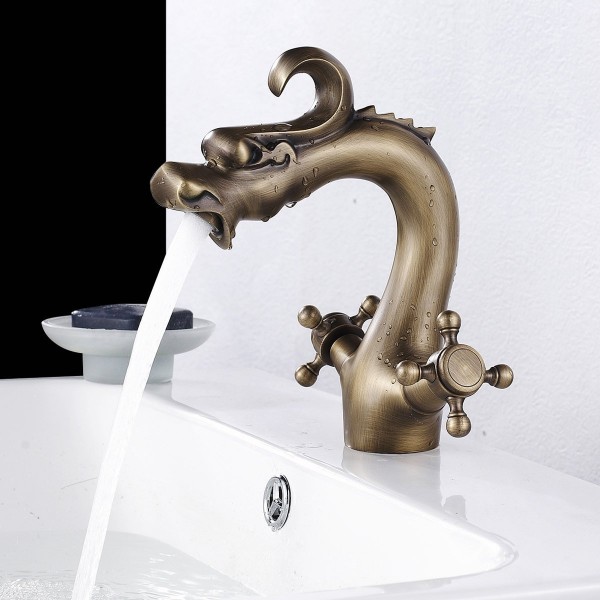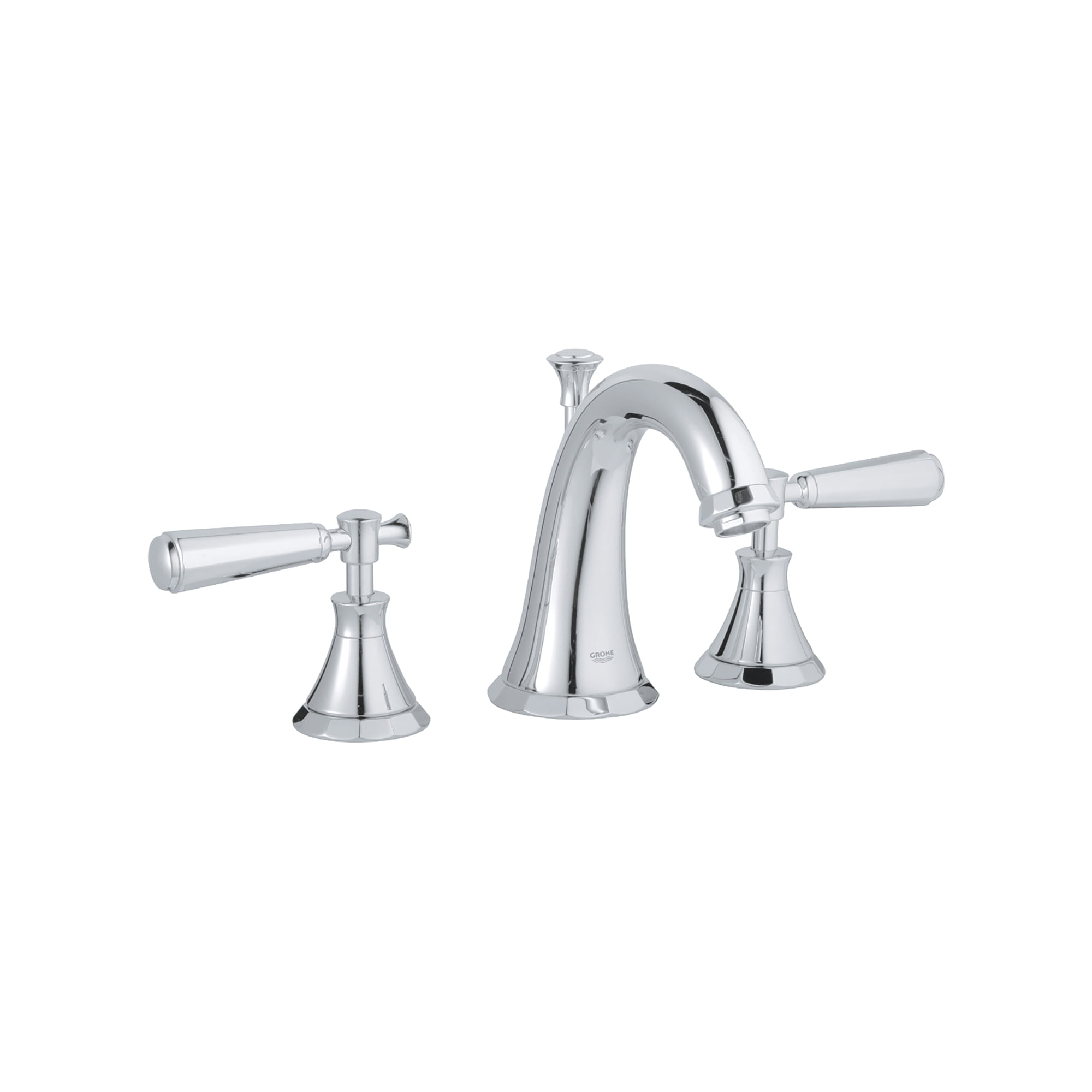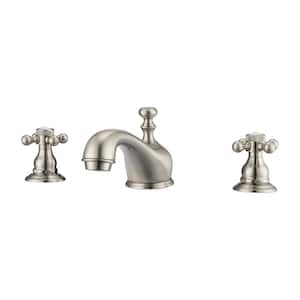The Importance of Bathroom Faucets in Interior Design
Bathroom faucets are often overlooked in the grand scheme of interior design, but they play a crucial role in tying the entire look of a bathroom together. Beyond their practical purpose, these fixtures can significantly influence the aesthetic and functionality of the space. Here are six key reasons why bathroom faucets are important in interior design.
- Central Focal Point: Bathroom faucets serve as a focal point in the room. The eye naturally gravitates towards the sink area, making the faucet a critical element in defining the style and feel of the bathroom. A well-chosen faucet can elevate the overall design, acting as a statement piece that reflects the homeowner’s taste and personality.
- Enhancing Aesthetic Appeal: Faucets come in a variety of styles, finishes, and designs, allowing homeowners to customize their bathroom to their liking. From sleek, modern designs to classic, vintage styles, the right faucet can enhance the aesthetic appeal of the space. Matching the faucet with other bathroom fixtures, such as showerheads and towel racks, creates a cohesive look that is visually pleasing.
- Adding Value to Your Home: Investing in high-quality, decorative bathroom faucets can add significant value to your home. Potential buyers often look for updated and stylish bathrooms when considering a purchase. A bathroom with well-chosen faucets can leave a lasting impression, making the property more attractive and potentially increasing its market value.
- Reflecting Personal Style: Bathroom faucets are a great way to express personal style and creativity. Whether you prefer a minimalist look, a rustic feel, or an opulent design, there are faucets available to suit every preference. The ability to customize the look of your bathroom through faucet selection allows you to create a space that truly feels like your own.
- Functionality and Ergonomics: While aesthetics are important, functionality should not be overlooked. Modern bathroom faucets are designed with ergonomics in mind, ensuring ease of use and comfort. Features such as single-handle operation, touchless technology, and adjustable water flow contribute to a more convenient and enjoyable user experience.
- Sustainability and Water Efficiency: Sustainable design is becoming increasingly important in interior design. Many decorative bathroom faucets now come with water-saving features that help reduce water consumption without compromising on performance. Choosing faucets with aerators and flow restrictors can significantly lower water usage, promoting a more eco-friendly home.

Types of Decorative Bathroom Faucets: Styles and Finishes
Bathroom faucets come in an array of styles and finishes, offering endless possibilities for customization. From classic to contemporary, and from chrome to brushed nickel, each combination brings a unique flair to the bathroom. Here’s a detailed look at the different types of decorative bathroom faucets and the finishes available.
Traditional Style Faucets
Traditional faucets are characterized by their classic and timeless design. They often feature ornate details and curved lines, evoking a sense of elegance and sophistication. These faucets are ideal for bathrooms with a vintage or classic theme, adding a touch of old-world charm to the space.
Modern and Contemporary Faucets
Modern faucets boast sleek, clean lines and minimalistic designs. They are often made from materials like stainless steel and chrome, giving them a polished and sophisticated look. Contemporary faucets are perfect for bathrooms with a modern or minimalist design, providing a chic and streamlined appearance.
Rustic and Farmhouse Faucets
Rustic and farmhouse faucets are designed to bring a warm and inviting feel to the bathroom. They typically feature finishes like oil-rubbed bronze and copper, with designs that incorporate elements of nature and vintage charm. These faucets are ideal for creating a cozy and rustic bathroom ambiance.
Industrial Style Faucets
Industrial faucets are known for their robust and utilitarian design. They often feature exposed pipes, matte finishes, and sturdy materials like brass and iron. These faucets add a unique and edgy look to the bathroom, making them a popular choice for urban and loft-style spaces.
Transitional Faucets
Transitional faucets blend elements of both traditional and contemporary styles, offering a versatile and balanced look. They often feature a combination of clean lines and subtle curves, making them suitable for a variety of bathroom designs. Transitional faucets are perfect for homeowners who want a timeless look with a modern twist.
Popular Finishes
The finish of a faucet can significantly impact the overall look of the bathroom. Popular finishes include chrome, brushed nickel, polished brass, oil-rubbed bronze, and matte black. Each finish has its unique appeal, with chrome offering a sleek and shiny look, brushed nickel providing a warm and muted tone, and matte black adding a bold and dramatic touch.
Choosing the Right Faucet for Your Bathroom Aesthetic
Selecting the perfect faucet for your bathroom involves more than just picking a design you like. It requires consideration of the overall bathroom aesthetic, functionality, and compatibility with existing fixtures. Here are six essential tips for choosing the right faucet to complement your bathroom’s style.
Consider the Overall Theme
The first step in choosing a faucet is to consider the overall theme of your bathroom. Is it modern, traditional, rustic, or eclectic? Matching the faucet style to the bathroom theme ensures a harmonious and cohesive look. For example, a sleek chrome faucet works well in a modern bathroom, while a vintage brass faucet complements a traditional setting.
Pay Attention to Finish
The finish of the faucet is crucial in determining the final look of the bathroom. Chrome and stainless steel finishes are ideal for modern and contemporary designs, while brushed nickel and oil-rubbed bronze add warmth and sophistication to traditional and rustic styles. Consider how the finish will coordinate with other bathroom fixtures and accessories.
Think About Functionality
Functionality is just as important as aesthetics. Consider the daily use of the faucet and choose features that enhance convenience. Single-handle faucets offer easy temperature and flow control, while touchless faucets provide a hygienic, hands-free experience. Ensure the faucet meets your practical needs without compromising on style.
Evaluate Faucet Height and Reach
Faucet height and reach are important factors to consider, especially if you have a specific sink style. Ensure the faucet is compatible with your sink in terms of height and spout reach. A high-arc faucet may be suitable for vessel sinks, while a low-profile faucet works better with undermount sinks.
Coordinate with Existing Fixtures
To achieve a cohesive look, coordinate the faucet with existing bathroom fixtures such as showerheads, towel racks, and cabinet hardware. Matching finishes and styles create a unified appearance that enhances the overall design of the bathroom. If you’re renovating the entire bathroom, consider purchasing a faucet set that includes matching accessories.
Budget and Quality
While it’s tempting to go for the most visually appealing faucet, it’s essential to consider your budget and the quality of the product. High-quality faucets may come with a higher price tag, but they offer better durability and performance. Look for reputable brands that offer warranties and positive customer reviews to ensure you’re making a wise investment.
Innovative Features in Modern Decorative Faucets
Modern decorative faucets are not just about looks; they also incorporate innovative features that enhance functionality and convenience. These advancements make everyday tasks easier and more enjoyable. Here are six innovative features found in contemporary decorative faucets.
Touchless Technology
Touchless faucets use motion sensors to detect hand movements, allowing users to turn the water on and off without touching the faucet. This technology is particularly beneficial for maintaining hygiene and reducing the spread of germs. Touchless faucets are also convenient for users with limited mobility.
Smart Faucets
Smart faucets integrate with home automation systems, offering features such as voice control, temperature presets, and water usage tracking. These faucets can be controlled via smartphone apps, allowing users to customize their water experience and monitor consumption, promoting water conservation.
LED Temperature Indicators
Many modern faucets come with LED temperature indicators that change color based on the water temperature. This feature helps prevent accidental scalding and adds a futuristic touch to the bathroom. The LED lights can also serve as a nightlight, enhancing safety and convenience.
Adjustable Water Flow
Adjustable water flow features allow users to customize the water pressure and flow rate. This is particularly useful for tasks that require different water intensities, such as washing hands, filling a bathtub, or rinsing delicate items. Some faucets also offer spray and stream modes for added versatility.
Water Filtration Systems
Integrated water filtration systems are becoming increasingly popular in modern faucets. These systems remove impurities and contaminants from the water, providing clean and safe drinking water directly from the tap. This feature is convenient and eco-friendly, reducing the need for bottled water.
Eco-Friendly Designs
Eco-friendly faucets are designed to conserve water without sacrificing performance. Features such as aerators and flow restrictors help reduce water consumption, making these faucets an environmentally responsible choice. Many eco-friendly faucets are also made from sustainable materials, further minimizing their environmental impact.
Installation Tips
Installing a decorative bathroom faucet can be a rewarding DIY project that enhances the look and functionality of your bathroom. However, it requires careful planning and execution to ensure a successful installation. Here are six essential tips to help you install your decorative bathroom faucet with ease.
Gather Necessary Tools and Materials
Before starting the installation, gather all the necessary tools and materials. You will typically need a wrench, plumber’s tape, a basin wrench, a screwdriver, and a bucket. Ensure you have the faucet instructions and all components included in the package. Having everything ready will make the installation process smoother and more efficient.
Turn Off the Water Supply
Always turn off the water supply before starting any plumbing work. Locate the shut-off valves under the sink and turn them clockwise to stop the water flow. If there are no shut-off valves, you may need to turn off the main water supply. Place a bucket under the sink to catch any residual water that may drain from the pipes.
Remove the Old Faucet
Removing the old faucet involves disconnecting the water supply lines and unscrewing the mounting nuts. Use a wrench to loosen the connections and a basin wrench for hard-to-reach areas. Carefully lift the old faucet from the sink and clean the surface to remove any debris or old sealant.
Install the New Faucet
Follow the manufacturer’s instructions to install the new faucet. Typically, you will need to place the gasket or plumber’s putty around the base of the faucet to create a watertight seal. Insert the faucet through the mounting holes and secure it with mounting nuts. Tighten the nuts with a wrench, being careful not to overtighten and damage the components.
Connect Water Supply Lines
Connect the water supply lines to the corresponding hot and cold inlets on the faucet. Use plumber’s tape on the threaded connections to ensure a secure and leak-free seal. Tighten the connections with a wrench, again being cautious not to overtighten. Once connected, turn on the water supply to check for leaks.
Test and Adjust
After the installation, turn on the faucet to test its functionality. Check for any leaks around the connections and make necessary adjustments. Ensure the water flow and temperature are working correctly. If everything is in order, clean up the area and enjoy your new decorative bathroom faucet.
Maintaining and Cleaning Your Decorative Faucets
Proper maintenance and cleaning of your decorative bathroom faucets are essential to keep them looking beautiful and functioning efficiently. Regular upkeep can prevent build-up and damage, ensuring your faucets last for years to come. Here are six tips for maintaining and cleaning your decorative bathroom faucets.
Regular Cleaning Routine
Establishing a regular cleaning routine helps prevent the build-up of dirt, grime, and mineral deposits. Use a mild soap and warm water to clean the faucet surfaces, and avoid harsh chemicals that can damage the finish. Wipe the faucet with a soft cloth to remove any soap residue and water spots.
Preventing Water Spots
Water spots can detract from the appearance of your faucets. After each use, wipe down the faucet with a dry cloth to remove any water droplets. This simple step can prevent water spots and maintain the shine of the faucet. Consider using a water-repellent spray to further protect the finish.
Dealing with Hard Water Stains
Hard water stains can be stubborn and unsightly. To remove them, use a mixture of vinegar and water. Soak a cloth in the solution and wrap it around the affected area for a few minutes. Gently scrub with a soft brush or sponge, then rinse and dry the faucet. For tougher stains, repeat the process as needed.
Cleaning Aerators
Aerators can become clogged with mineral deposits over time, affecting water flow and pressure. To clean the aerator, unscrew it from the faucet and soak it in vinegar for a few hours. Use a small brush to remove any debris, then rinse and reattach the aerator. Regular cleaning of the aerator ensures optimal water flow.
Protecting the Finish
Protecting the finish of your decorative faucet is crucial to maintain its appearance. Avoid using abrasive cleaners or scrubbers that can scratch the surface. Use a soft cloth or sponge for cleaning, and avoid leaving acidic or corrosive substances on the faucet for prolonged periods. Regularly apply a non-abrasive wax or polish to protect and enhance the finish.
Addressing Leaks and Drips
Addressing leaks and drips promptly prevents water damage and maintains the efficiency of your faucet. If you notice a leak, check the connections and tighten any loose parts. Replace worn-out washers or seals to stop drips. Regularly inspecting and maintaining your faucet can prevent minor issues from becoming major problems.
Luxury White Marble Bathroom Vanity Faucet Gold Two Handle
Related Posts:





